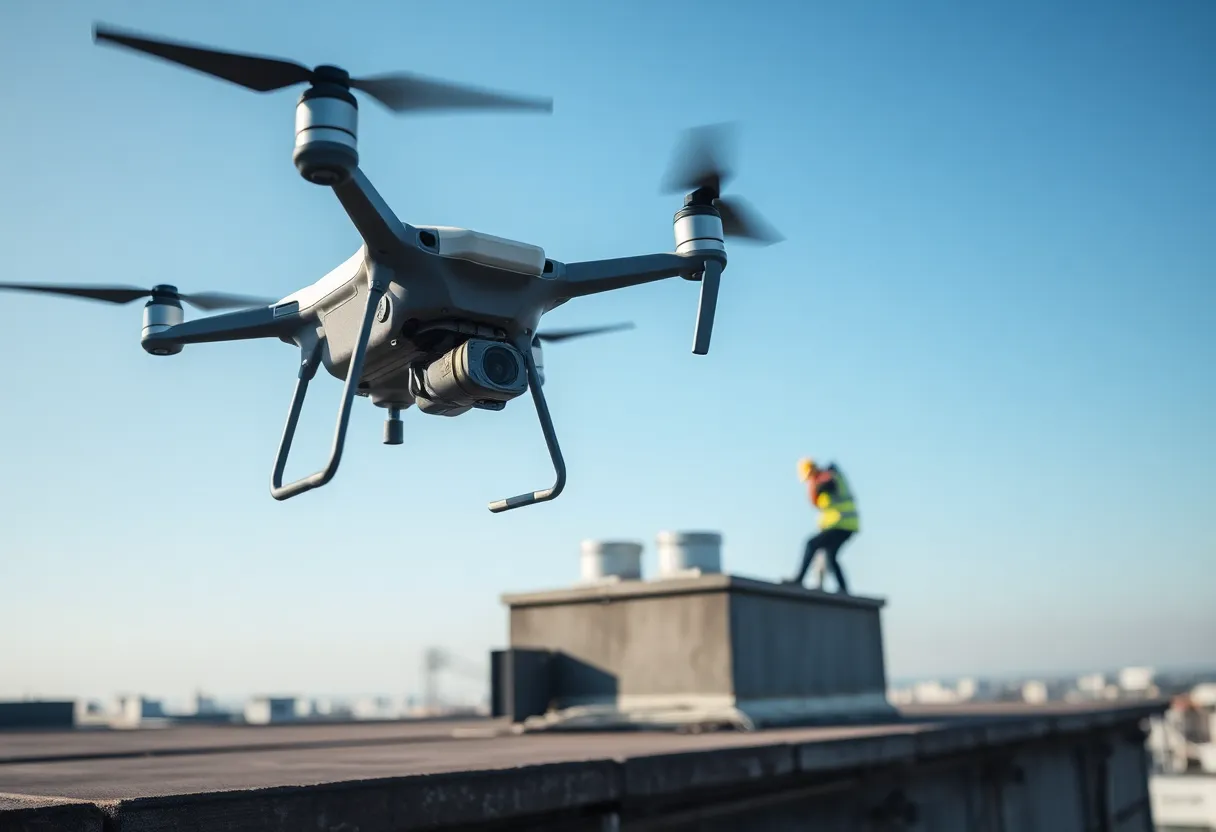News Summary
Drones Rise as Game Changer in Asbestos Management
The landscape of asbestos identification and removal is witnessing a significant transformation, thanks to the advancements in drone technology. As public and professional anxieties surrounding the hazards of asbestos continue to escalate, the introduction of remotely operated drones in this field stands as a promising solution to many long-standing challenges.
The Role of Drones in Asbestos Inspection
Asbestos, notorious for its health risks, particularly to the lungs, often lurks in the shadows of older buildings. With microscopic fibers that can escape the naked eye, traditional methods of identification can be cumbersome and hazardous for workers. Enter drones: these lightweight robotic systems are revolutionizing how asbestos inspections are conducted. Equipped with high-resolution cameras and specialized sensors, drones can perform remote visual inspections of locations previously deemed too risky for human workers, such as high roofs and cramped spaces.
The immediate advantage is clear—using drones significantly minimizes the risk of harmful exposure to asbestos fibers during inspections, protecting the health of professionals. Moreover, the efficient capabilities of drones can expedite the assessment and documentation processes, thereby making asbestos management safer, easier, and more cost-effective.
Turning Concept into Reality
While the technology is still in its nascent stages when it comes to the physical removal of affected materials, the potential for drones to assist in remediation processes is under serious consideration. As the industry develops x-ray vision-like capabilities, the prospect of combining visual inspection with robotic functionality could change the face of asbestos remediation. This shift not only promotes safety but also aids in recognizing the hidden dangers that older homes may harbor.
Community Concerns and Cleanup Operations
It is critical that the public is kept informed before and during cleanup operations, particularly as improper handling of hazardous materials can lead to severe health consequences. As cleanup crews gear up with protective equipment, the community watches closely, calling for transparency and timely notifications of upcoming operations that may affect their health and environment.
Looking Ahead: A Collaborative Effort
The integration of drone technology into asbestos management strategies holds immense promise but underscores the importance of collaboration with certified professionals. Drones are designed to assist, not replace, skilled asbestos workers. They complement existing practices with tools that make inspections safer and more efficient, paving the way for a comprehensive approach to dealing with asbestos hazards.
Moreover, ongoing studies and pilot projects are dedicated to exploring the full capabilities of drones in asbestos management. As this technology continues to evolve, it is expected to play an essential role in creating safer environments in both residential buildings and industrial sites plagued by asbestos contamination.
Conclusion
In conclusion, the rising use of drone technology in asbestos identification and removal represents a beacon of hope in an industry long marred by safety concerns. With capabilities poised to improve inspection efficiency, the adoption of drones could revolutionize how communities address the lingering threats posed by asbestos. Through responsible innovation and community cooperation, the dream of a safer, asbestos-free environment may soon be within reach.
Deeper Dive: News & Info About This Topic
HERE Resources
Asbestos Alarms Ring as California Wildfires Rage On
Exploring Surgical Options for Mesothelioma Treatment
Mesothelioma Basics for Newly Diagnosed Patients
Medical FAQs About Mesothelioma Diagnosis and Treatment
The Rialto Square Theatre Reopens After Asbestos Scandal: A New Dawn for Joliet’s Jewel
Health Officials Warn of Hidden Dangers After Wildfire Smoke in Los Angeles County
New FDA Proposal Targets Asbestos in Talc-Containing Cosmetics
Major Change on the Horizon for Asbestos Testing in Cosmetics
Waveny House Takes Action Against Asbestos Threat
Asbestos Use During World War II: A Hidden Threat to Veterans
Additional Resources
- Mesothelioma.com: Drones to Remove Asbestos
- Wikipedia: Asbestos
- North Jersey: EPA Didn’t Tell Residents About Debris Work at Paterson Ruins
- Google Search: asbestos removal
- North Jersey: Asbestos Removal at Historic Mills Delays Paterson Park Launch
- Encyclopedia Britannica: Asbestos
- Alloa Advertiser: Discovery of Asbestos at Pump Track
- Google News: asbestos cleanup



















